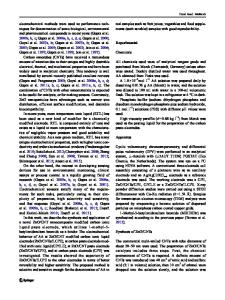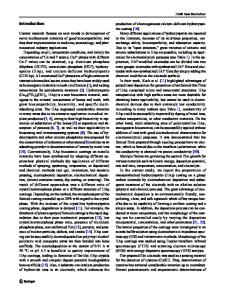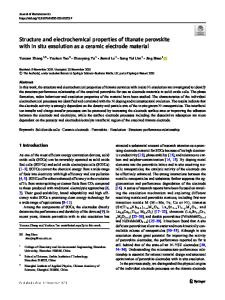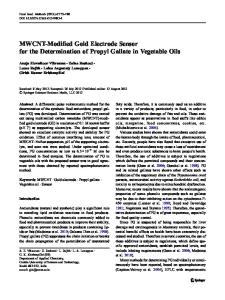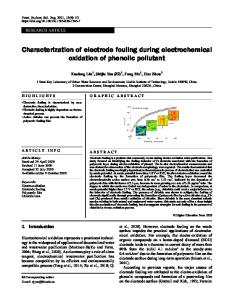Electrochemical Properties of MDA/GC Electrode and Investigation of Usability as Sensor Electrode for Determination of Q
- PDF / 472,486 Bytes
- 7 Pages / 595.276 x 790.866 pts Page_size
- 55 Downloads / 387 Views
Electrochemical Properties of MDA/GC Electrode and Investigation of Usability as Sensor Electrode for Determination of Que, Kae, Lut and Gal Using CV, DPV and SWV Ayşen Demir Mülazımoğlu & İbrahim Ender Mülazımoğlu
Received: 14 February 2012 / Accepted: 18 April 2012 / Published online: 3 May 2012 # Springer Science+Business Media, LLC 2012
Abstract Flavonoids, natural vegetable dyes synthesized from phenylalanine, are responsible for the colour of blooming portions of plants. They are very essential for human health due to their activity as free radical acceptors. In this study, electrochemical modification of a glassy carbon (GC) electrode with 4,4′-methylenedianiline (MDA) was carried out, and the modified electrode was investigated separately and simultaneously for the availability in determination of quercetin, kaempferol, luteolin and galangin. The surface modification of the GC electrode was performed with MDA using cyclic voltammetry (CV), whereas the characterization of this sensor electrode was performed using CV, electrochemical impedance spectroscopy and scanning electron microscopy. The usability of the modified electrode has been examined in the determination of some flavonoids using CV, differential pulse voltammetry and square wave voltammetry. Consequently, flavonoid derivatives can easily be determined separately and simultaneously by using an MDA-modified GC sensor electrode. Keywords Chemically modified electrode . Amine oxidation . Flavonoid . Surface characterization . Scanning electron microscopy
Introduction Electrochemical methods are based on the direct oxidation or reduction of substrate onto an electrode surface. Electrode reactions are very suitable for analytical applications due to A. D. Mülazımoğlu : İ. E. Mülazımoğlu (*) Department of Chemistry, Ahmet Keleşoğlu Education Faculty, Necmettin Erbakan University, 42099, Konya, Turkey e-mail: [email protected]
their requirements of high potential. Moreover, these surfaces can be modified by a reductive substrate for analytical applications (İsbir-Turan et al. 2012; Mulazımoglu and Ozkan 2008; Mulazimoglu 2011). Chemically modified electrodes (CMEs), generally based on the incorporation of a catalyst or a redox mediator, have extended the applicability of electrochemical detection. CMEs which enhance the sensitivity, selectivity and reproducibility of electrochemical analysis techniques have received increasing attention in the past decades (Mulazımoglu and Ozkan 2008; Mulazimoglu 2011; Xue et al. 2000; Kubant et al. 2006; Corte et al. 2007). Recently, application of chemical-modified electrode in biology and chemistry has been paid more and more attention. Especially, the conducting polymers are very effective substrates for biomaterial immobilization. Some conducting polymers are doped and/or covalently or physically modified by bionanomaterials, especially proteins and nucleic acids, which exhibit unique catalysis (Malinauskas 1999) or affinity properties that can be easily employed in the design of biosensors (Ramanaviciene an
Data Loading...
